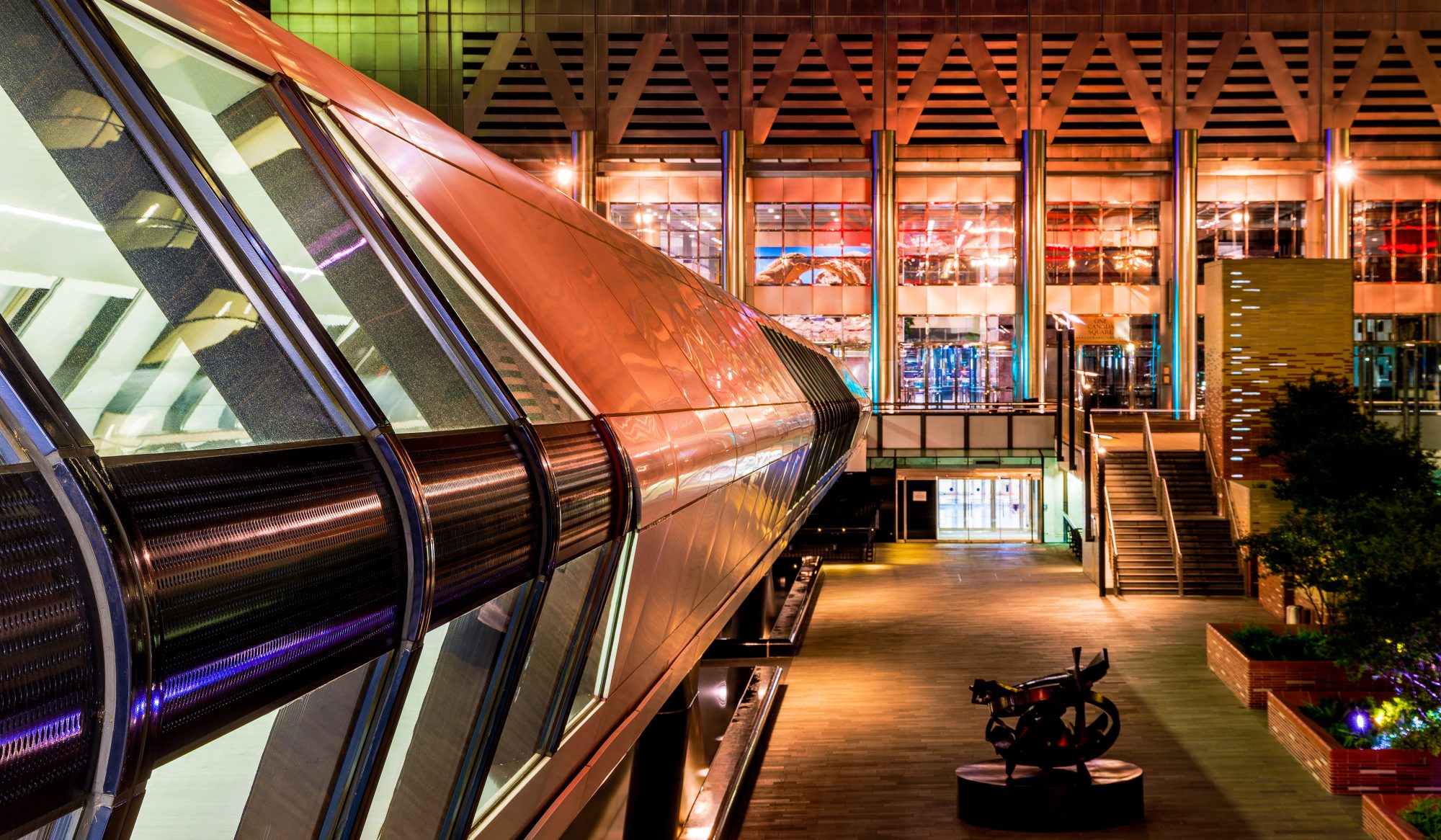StudioKCA installation made from ocean plastic waste carries an environmental message as it captures the attention of Canary Wharf visitors
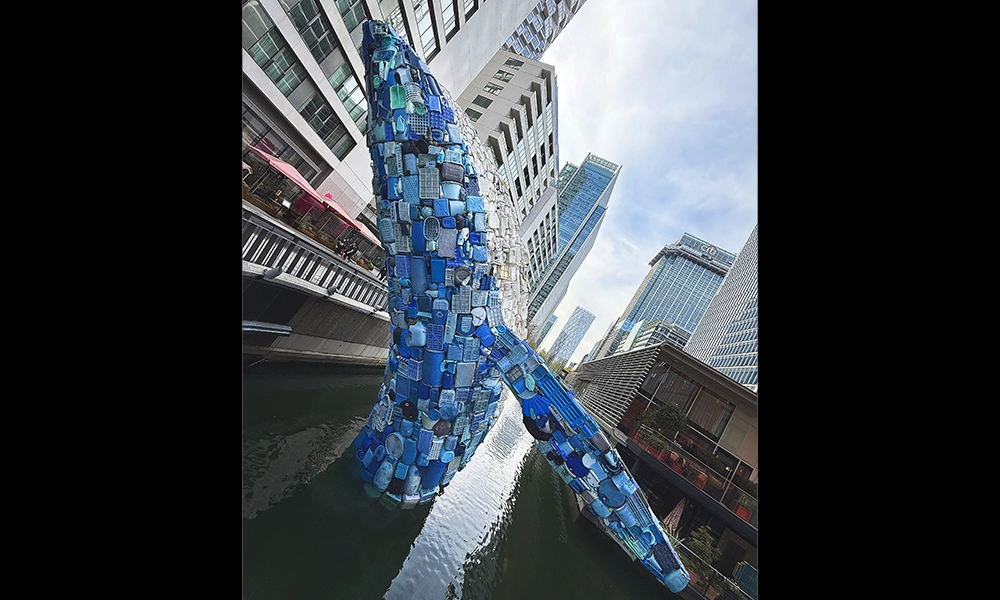
Subscribe to our free Wharf Whispers newsletter here
Just ask Jonah, whales are messengers.
The largest creatures on Earth have inspired countless works of art and fiction, often used to draw attention to matters of importance.
In the Hebrew scriptures, Jonah finds redemption in the belly of a great sea creature, having turned back to a righteous path.
There’s Moby Dick and Thomas Hobbes’ Leviathan too, but we needn’t get bogged down with revenge, obsession and highfalutin social philosophy.
More recently, Star Trek IV: The Voyage Home saw Captain Kirk and crew forced to time travel back to 1986 on the silver screen to pick up a pair of humpback whales, thereby averting ecological disaster after an alien probe comes seeking the ocean giants, only to find them extinct in 2286.
That’s almost as far-fetched as everyone running around with hand-held communication devices and tablet computers…
Recently unveiled on Water Street, Whale On The Wharf, then, belongs to that proud tradition of leveraging the largest animal on the planet as a lodestone for attention and it’s exactly what StudioKCA’s intallation does.
Leaping from the waters of the dock close to Marceline and Dishoom, the 12-metre high sculpture successfully breaches the consciousness of passers-by.
StudioKCA have also created similar pieces in Kaohsiung, Taiwan, and in Bruges, Belgium.
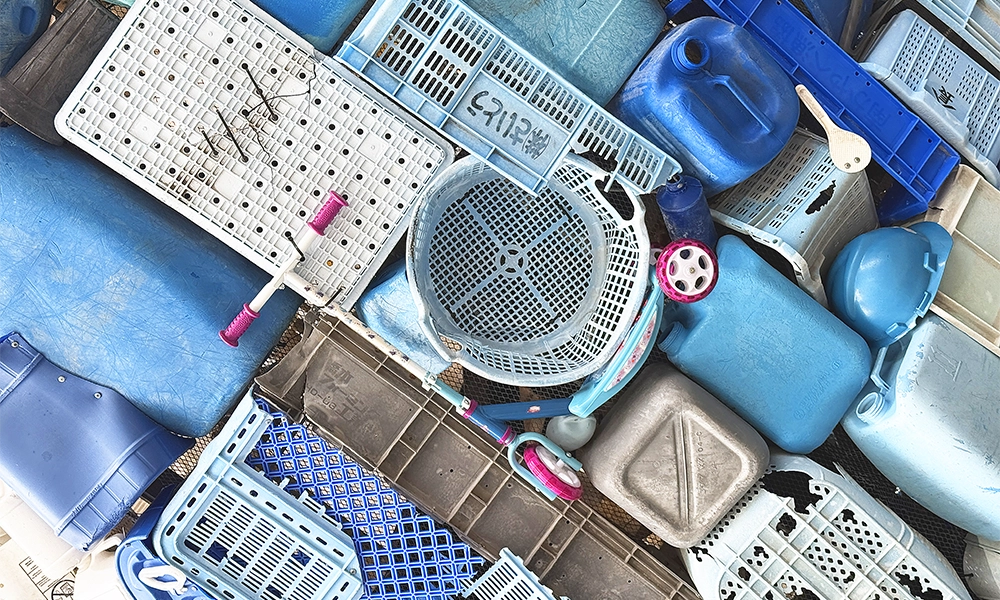
the story Whale On The Wharf tells
“We’re telling the story of how we live, what we use, where it ends up and what we should do about it,” said Jason Klimoski, who along with his wife Lesley Chang run the Brooklyn-based art and design studio that created the piece.
“It’s about the 150million tonnes of plastic in the ocean and the 8million we add to that each year.
“A lot of that is hidden, so bringing some of it here hopefully helps people visualise it.
“The plastic used in Whale On The Wharf comes from the Pacific and the Atlantic. We worked with the Hawaii Wildlife Fund to collect about five tonnes of plastic.
“We cleaned it, organised it by how long it had been in the water, sorted it by colour and cleaned it piece by piece.
“We chose to make a whale because, pound-for-pound, the plastic in the ocean weighs more than the total of all the whales on the planet.
“We thought it would be the perfect metaphor to help people understand the scale of the problem.”
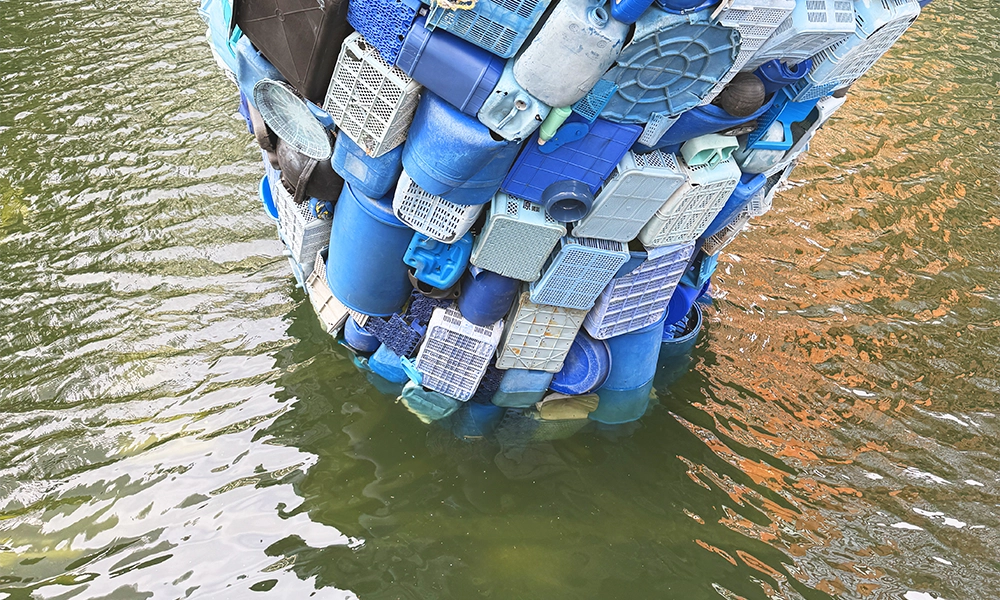
a sustainable foundation for Whale On The Wharf
While the leaping creature is the public-facing portion of the work, Whale On The Wharf is also a creation of significant depth.
Canary Wharf Group’s commission is about a lot more than adding to its extensive public art collection.
Wharfers sipping coffee on the estate and then discarding their cups in its waste bins have contributed to its construction.
The sculpture sits on a foundation of concrete made with biochar, a material that replaces sand in the mix and is made from those discarded grounds.
This also prevents CO2 being released when the coffee breaks down and reduces demand for the extraction of traditional raw resources from the Earth.
“We understand the power that art holds,” said Sophie Goddard, director of environment, social and governance at Canary Wharf Group.
“It can provoke emotion and it can create change.
“With this project we’ve really pushed the boundaries of what can be achieved.
“We thought about how we can take the principles of the circular economy and push those forward.
“We’ve locked up spent coffee in the foundation and we’ve been able to do that through the efforts of our in-house waste management team.
“They hand-sort the rubbish that goes into our bins and their work means we’ve sent no waste to landfill since 2009.”
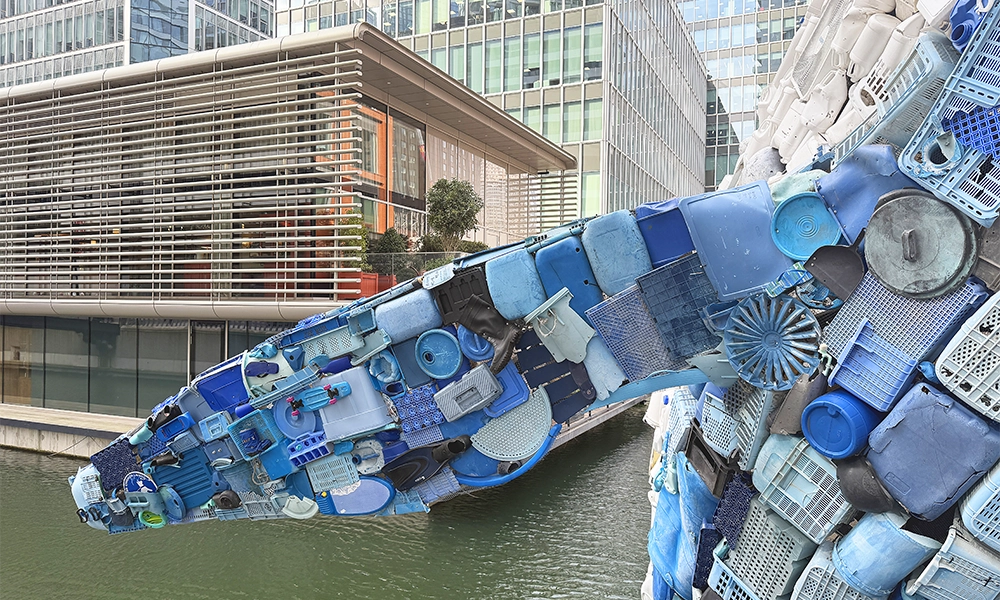
a strong steel core
On top of the concrete, Whale On The Wharf is supported by a braced steel structure made from recovered and reused steel to further reduce its environmental impact.
Jason said: “Inside the sculpture there’s a steel spine that supports the structure and aluminium armature to make the shape of the whale.
“Onto that we attached each of the pieces of plastic using steel ties and screws.
“We really want people to see the things they use every day, to recognise them and then wonder what happens to them. How did the things that make up this sculpture get here? What was their journey?
“There’s a car bumper, a kid’s toilet. It’s really the items that relate to children I find both funny and sad.
“Hopefully there’ll be a conversation at home after, especially with the kids, about how we use plastic and what we do with it afterwards.
“When we were building it, we were focussed on the scale of the issue, not necessarily on the thing itself.
“We have a son and so we have to think about the stuff we buy him and what will happen to it.”
Now Canary Wharf has both a head-turning artwork and also a constant reminder of the consequences of unbridled consumption on our planet.
As well as its role in drawing attention to environmental issues, the installation is a significant addition to the estate’s sculpture collection – the largest publicly accessible collection of outdoor works in the UK.
“The whales is a landmark, it’s visually stunning and it really stops people in their tracks,” said Lowri Harries, associate curator of public art at Canary Wharf Group.
“That’s exactly what we want. Since our initial call with Jason, the installation has involved pretty much every part of our business.
“Construction, development, sustainability, marketing and communications as well as all the external contractors that have worked on the project.
“It’s taken a village to make this happen and we’re really thankful to everyone involved.”
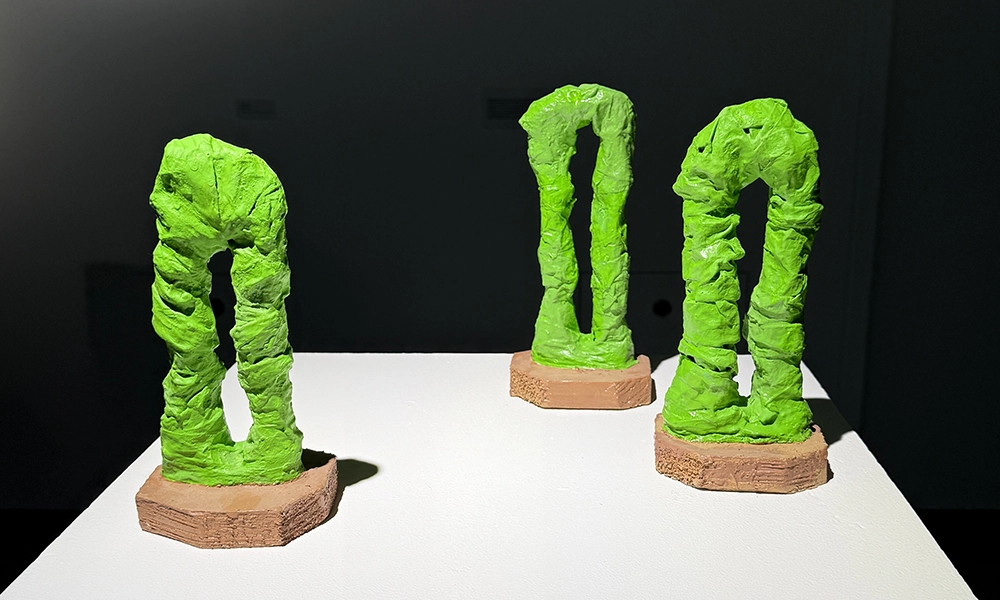
opening up Refuse
Coinciding with the launch of Whale On The Wharf, Canary Wharf Group is also hosting Refuse, an exhibition of works by artists Poojan Gupta and Ashley Cluer who both work with reclaimed materials.
Visitors can expect to see a selection of sculptures including a vast chain made from medicine blister packs and vibrant lime green shapes made from cement, newspaper and recycled wood.
Free to access, the exhibition is on display at Broadwick Studio.
Perhaps when prompted by all these signs, we might take more notice of the way we’re living as a species and even avoid alien annihilation in the future.
PS, at Wharf Life we’re calling the Whale Bruce. You didn’t hear it from us…
key details: Whale On The Wharf
Whale On The Wharf is located on the corner of Water Street and Park Drive in Canary Wharf’s Wood Wharf. The installation is free to visit.
Refuse is in place until April 26, 2025, and is open from 10am-6pm on Thursdays, Fridays and Saturdays at Broadwick Studio on the corner of Water Street and Charter Street in Wood Wharf.
Find out more about the sculpture here
Read more: How Orbit Clipper is set to become the first all-electric ferry on the Thames
